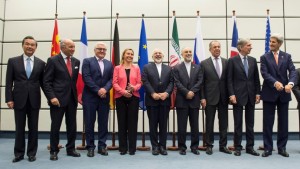By: Tiffany Walker
The United States has imposed new sanctions on Iran this week following the recent ballistic missile test that was conducted by Iran. However, the sanctions are confusing in part because the United States just lifted the country’s international nuclear sanctions as a part of the controversial Iran nuclear deal or Joint Comprehensive Plan of Actions (JCPOA). The nuclear deal lifted immense economic sanctions on Iran. The White House had stated that the deal would prevent Iran from obtaining a nuclear weapon.
The nuclear deal has many different components. First, the two uranium enrichment facilities in Iran where a gas called uranium hexafluoride is fed into centrifuges that separate out the isotope U-235. Some uranium, low-enriched uranium, is used to produce fuel for nuclear plants. Highly enriched uranium is used to make nuclear weapons. Under the deal, Iran cannot install more than about 5,000 centrifuges. The most central component of the deal was the possibility of covert weapons development. In other words, Iran could potentially develop nuclear weapons without being caught. However, the Obama Administration is confident in the deal and believes the JCPOA will prevent Iran from developing nuclear weapons.
The International Atomic Energy Agency (IAEA), a global watchdog of nuclear activity, will be able to continually monitor Iran’s declared nuclear sites and any other sites that they deem “suspicious”. The new sanctions were implemented because of missile testing. Iran tested a ballistic missile capable of delivering nuclear warheads. Iran has maintained that its missile program has never been designed to be capable of carrying nuclear warheads. Missiles are used for many different reasons, for example to launch satellites into space. It is unclear how long the sanctions will last against Iran, or what the long-term effects will be on the nuclear deal.

